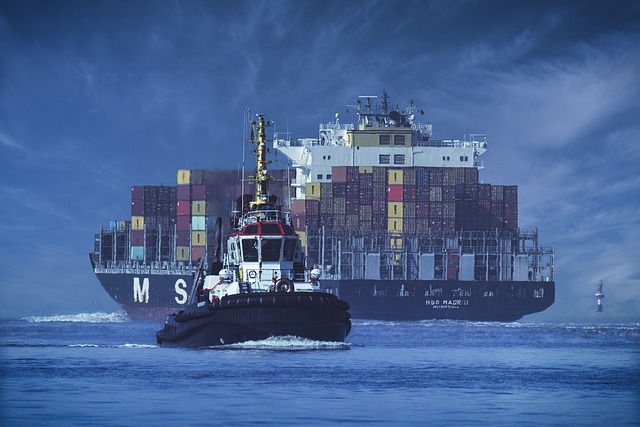Warehouse Jobs in the Netherlands for English Speakers
Individuals living in the Netherlands who are proficient in English can find various roles within the warehouse sector. These positions typically involve tasks such as inventory management, order fulfillment, and product handling. Understanding the main responsibilities associated with warehouse work is essential for those interested in this field. Additionally, it is important to consider the working conditions that may be present in these environments, which can include physical demands and operational hours.

Warehouse operations in the Netherlands support international trade and e‑commerce, with many teams using English for instructions, training materials, and digital systems. Not every facility is fully bilingual, but large, multinational sites often have diverse teams and clear processes that help English speakers contribute effectively. The following guide outlines typical responsibilities, the skills employers value, and the workplace conditions you can expect in Dutch warehouses. It is informational in nature and does not present job listings or indicate that specific positions are currently available.
Understanding Warehouse Roles and Responsibilities in the Netherlands
Inbound activities usually start the cycle: unloading vehicles, checking delivery notes, scanning items, and putting stock into assigned locations. Accuracy at this stage supports traceability and reduces delays later. Storage tasks maintain organization through location control, safe stacking, and housekeeping to keep aisles clear. Outbound processes include order picking, packing, labeling, and staging pallets for loading.
Many sites rely on handheld scanners connected to a warehouse management system to guide tasks and verify picks. Inventory control teams conduct cycle counts, reconcile discrepancies, and document adjustments to keep records aligned with physical stock. Quality control checks packaging integrity, product condition, and compliance with customer standards. Returns processing may involve inspection, sorting, and relabeling. Throughout these steps, workers record exceptions—such as damages or short shipments—so issues can be traced and resolved across shifts.
Equipment ranges from manual pallet jacks to electric pallet trucks, reach trucks, and forklifts. Operating powered equipment requires training and valid certification according to site policy and Dutch regulations. Daily responsibilities also include routine safety checks, reporting hazards, and following lock-out or restricted-area rules where relevant. Performance metrics typically track accuracy, throughput, and adherence to standard operating procedures.
Key Skills Required for Working in a Warehouse Environment
Clear communication supports safety and efficiency. English is widely used in international operations for task instructions and radio calls; basic Dutch can help with signage, safety notices, and informal teamwork. Numeracy and basic computer literacy assist with scanning, reading location codes, and simple data entries.
Attention to detail is essential when verifying item numbers, batches, and quantities. A safety-first mindset includes proper lifting techniques, appropriate use of personal protective equipment, and prompt reporting of near misses. Reliability—arriving on time, following procedures, and completing handovers—keeps workflows stable. Adaptability helps during seasonal peaks or when switching between picking, packing, loading, and returns. Certifications such as forklift or reach-truck licenses, and introductory safety credentials like VCA Basic Veiligheid, can be advantageous where a role involves equipment or specific risk environments.
Teamwork skills matter because tasks are interconnected: pick accuracy affects packing, and packing quality affects loading. Constructive communication during shift handovers helps the next team understand open tasks and issues. Basic problem-solving—checking bin locations, confirming substitutions within guidelines, or escalating stock mismatches—supports consistent service.
Working Conditions and Expectations in Warehouse Positions
Shifts vary by operation. Many facilities run day, evening, and night shifts, with weekend work during busier periods. Breaks, safety briefings, and toolbox talks are routine. Sites commonly provide high-visibility clothing policies and require safety shoes; temperature-appropriate clothing is important for chilled or frozen environments. In areas with repetitive tasks, short, scheduled micro-breaks can help maintain focus and reduce strain.
Workplaces differ in layout and technology. Some warehouses are highly automated with guided vehicles or conveyor systems, while others rely more on manual handling and scanning. Regardless of setup, housekeeping—clear walkways, proper stacking, clean workstations—is a constant expectation. Facilities often include lockers, canteens, and rest areas. Many warehouses are located in industrial zones or business parks, so commuting may involve cycling, driving, or using public transport services in your area, depending on timetables.
Onboarding typically covers site rules, emergency procedures, and equipment introductions. New starters may begin with simpler tasks—such as packing or basic picking—before moving to inventory control or equipment operation. Performance expectations usually emphasize safety compliance, accuracy, and respectful communication. Availability of training varies by employer and is subject to operational needs and legal requirements; it should not be assumed for any particular site.
In temperature-controlled operations, comfort and safety practices are especially important. Chilled areas may require layered clothing and gloves suitable for handling while maintaining dexterity. For heavy or bulky items, two-person lifts, mechanical aids, or revised packing methods are used to meet ergonomic guidelines. Reporting minor risks early—spills, obstructed exits, frayed straps—helps prevent incidents and supports a proactive safety culture.
Practical preparation can make day-to-day work smoother. Understanding common warehouse terminology in English, and key Dutch safety words, helps with signage and briefings. Keeping a simple notebook with location codes, packaging standards, and common error checks can support accuracy during peak periods. Planning transport for early or late shifts reduces stress, especially in areas with limited public transport options outside peak hours.
Summary Warehouse work in the Netherlands follows structured processes designed around safety, accuracy, and reliable throughput. English is commonly used in international operations, though bilingual environments are frequent. The information above outlines typical roles, skills, and workplace expectations so readers can better understand how these environments function. This guide does not advertise or confirm the availability of specific positions and should be read as general background only.




